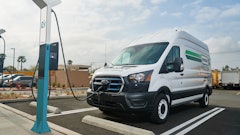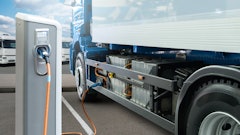The cover story in this issue, Supply & Demand Chain Executive's "2010 Green Supply Chain Awards," puts the spotlight on the variety of different approaches to driving sustainability into the supply chain. The scope of the various initiatives is by no means all-encompassing, nor is it intended to be. But it is intended to present readers with a broad scope of options for pursuing sustainability in their own supply chains.
One option that isn't represented in this year's awards list is green enterprise asset management. Green EAM, as a concept, has been slow to catch on. Maher Chebbo and Miquel Carbo with the SAP EMEA Utilities team offered up the following definition of green EAM in a presentation back in 2008: "Green EAM is the science of managing physical assets (plants, machinery, buildings, vehicles, etc.) from an environmental point of view, over the entire lifecycle, with the goal of: 1. Facilitating compliance; and 2. Reducing costs associated with all asset inputs and all asset outputs." Separately, then-SAPers David Goldbrenner (since departed from SAP) and Andreas Vogel noted in a presentation that "companies do not have the appropriate tools to truly manage the entire lifecycle of physical assets from an environmental perspective. This means estimating and accounting for greenhouse gas (GHG) emissions, other toxic outputs and water use — and doing so not only during operations, but in all phases of asset life."
Gopi Krishnan, delivery manager and lead with the SCM Practice at Infosys Technologies, notes that the market for enterprise asset management solutions includes a number of heavy-hitters, including ABB (Ventyx), IBM (Maximo), Infor and SAP, among others. But he points out that the big obstacles in moving toward effective green EAM are the organizational and people challenges. Organizationally, buying centers in companies can be very different. Facilities management and IT services management might roll up to the CFO, while core maintenance management personnel might roll up to a VP of operations, preventing the formation of a holistic view of asset management, let alone the creation of a green EAM strategy. More importantly, Gopi says that the systems that support EAM cannot capture the intrinsic knowledge that resides within the personnel most directly involved in asset management. "We need to figure out how to convert all that wisdom into systems," he says.
Gopi, who blogs on supply chain management issues that drive operational excellence and enterprise performance at www.infosysblogs.com/supply-chain, suggests that companies that are serious about green EAM must consider how to bring together all the constituents involved in asset management from across the enterprise to agree on a holistic — and consistent — view of EAM processes, tools and, most importantly, objectives. Is that easy? Absolutely, not. "It's a struggle," Gopi says frankly. But he suggests that the potential benefits to be had in terms of more efficient asset utilization, along with the "green" benefits, will, over time, drive more companies to take a hard look at green EAM.
Are you working on green EAM? Drop me a line at [email protected] and let me know how it's going. I'll look forward to hearing from you.
Related Articles
- Green is Global — Is Your Supply Chain Ready?
- The 21st Century Supply Chain Executive: Global and Green


























